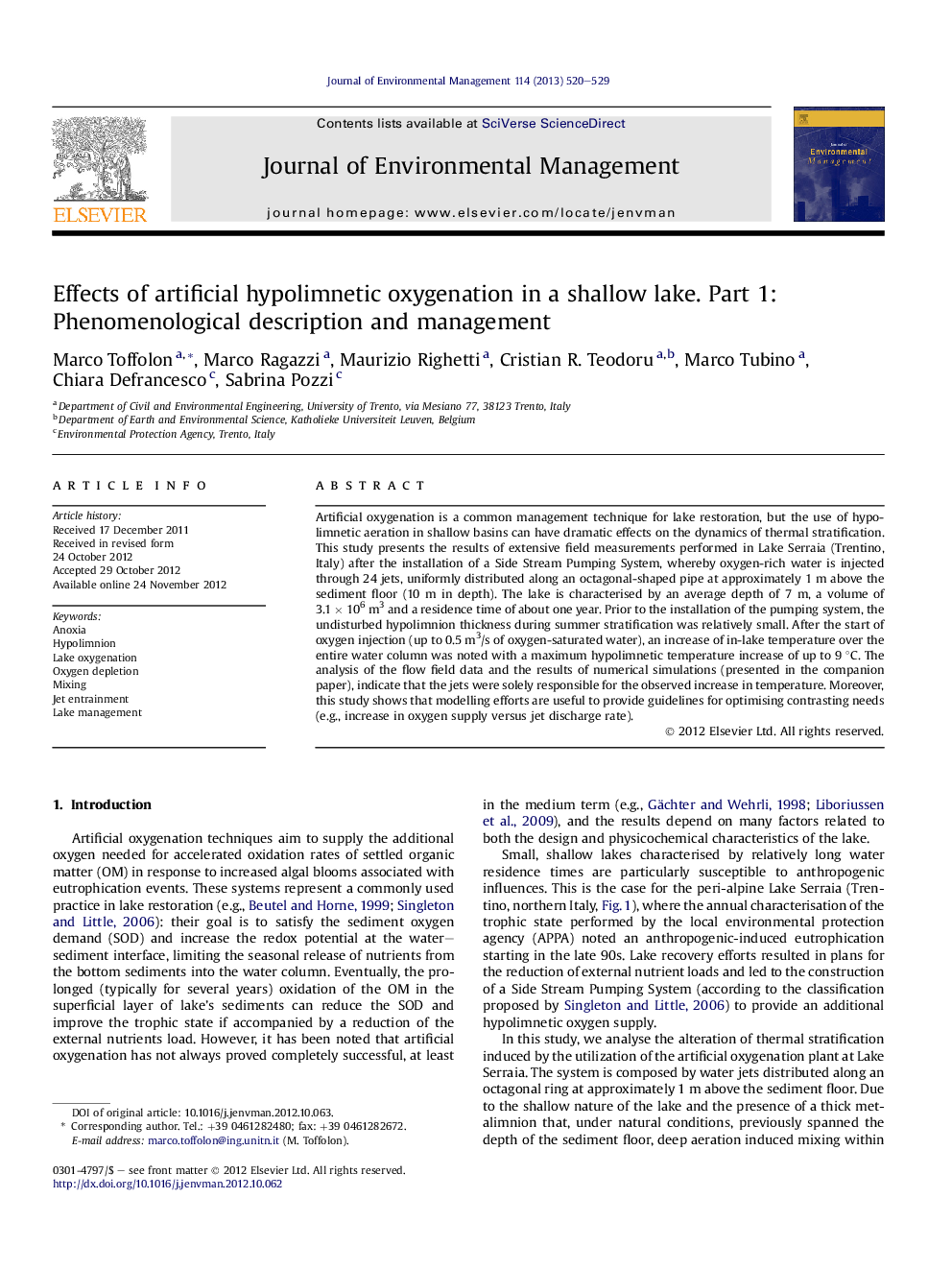| Article ID | Journal | Published Year | Pages | File Type |
|---|---|---|---|---|
| 1056628 | Journal of Environmental Management | 2013 | 10 Pages |
Artificial oxygenation is a common management technique for lake restoration, but the use of hypolimnetic aeration in shallow basins can have dramatic effects on the dynamics of thermal stratification. This study presents the results of extensive field measurements performed in Lake Serraia (Trentino, Italy) after the installation of a Side Stream Pumping System, whereby oxygen-rich water is injected through 24 jets, uniformly distributed along an octagonal-shaped pipe at approximately 1 m above the sediment floor (10 m in depth). The lake is characterised by an average depth of 7 m, a volume of 3.1 × 106 m3 and a residence time of about one year. Prior to the installation of the pumping system, the undisturbed hypolimnion thickness during summer stratification was relatively small. After the start of oxygen injection (up to 0.5 m3/s of oxygen-saturated water), an increase of in-lake temperature over the entire water column was noted with a maximum hypolimnetic temperature increase of up to 9 °C. The analysis of the flow field data and the results of numerical simulations (presented in the companion paper), indicate that the jets were solely responsible for the observed increase in temperature. Moreover, this study shows that modelling efforts are useful to provide guidelines for optimising contrasting needs (e.g., increase in oxygen supply versus jet discharge rate).
► We evaluate the effects of artificial hypolimnetic oxygenation of a shallow lake. ► We observe that high-pressure, oxygen-rich water injection disrupted lake thermal stratification. ► A maximum rise in hypolimnetic temperature of 9 °C amplified oxygen consumption. ► We conclude that high-pressure jet systems should be used with caution in lake restoration. ► The use of modelling tools is essential for lake management.
